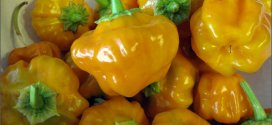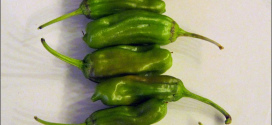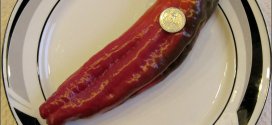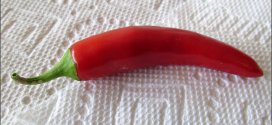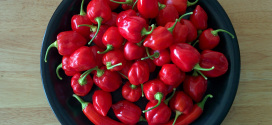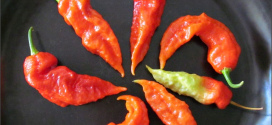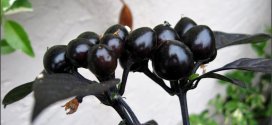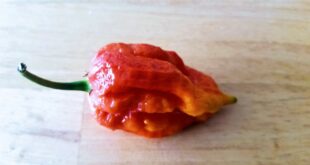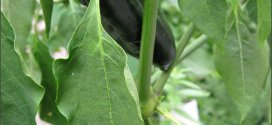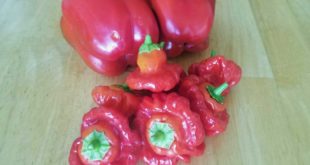SCOTCH BONNET YELLOW – very hot; Habanero Type; 1.25 to 1.75 inches long by 1 to 1.25 inches wide; medium thick flesh; matures from green to yellow; pendant pods; green leaves; 18 to 24 inches tall; Very Late Season (90+ days); C.chinense.
Read More »Chile
Chile – Pepperoncini
Peperoncini (or pepperoncini) are a variety of the species Capsicum annuum. The Greek varieties are sweeter and less bitter than the Italian varieties grown in Tuscany. Peperoncini are mild with a slight heat and a hint of bitterness, and are commonly pickled and sold packaged in jars. Peperoncini grow on a bushy plant that reaches 30 inches (77 cm) in …
Read More »Chile – Spanish Spice
Hot Pepper, Capsicum annuum ‘Spanish Spice’. A mild but flavorful pepper. Prepare the same as Padron chiles: Heat in skillet with olive oil until the skin is blistered, then sprinkle with sea salt.
Read More »Chile – Cayenne Red
Cayenne is a green or red hot chili pepper used to flavor chile food dishes and is also used for medicinal purposes. Named for the city of Cayenne in French Guiana, it is a cultivar of Capsicum annuum related to bell peppers, jalapeños, and others. The Capsicum genus is in the nightshade family (Solanaceae). The fruit is typically dried and …
Read More »Chile – Habanero – Red Savina
Red Savina pepper is a cultivar of the habanero chili (Capsicum chinense Jacquin), which has been selectively bred to produce hotter, heavier, and larger fruit. From 1994 to 2006, the Red Savina chili held the Guinness World Record as the hottest chili in the world. In 2007, it was surpassed by the Naga Jolokia pepper. Frank Garcia of GNS …
Read More »Chile – Bhut Jolokia
The Bhut Jolokia (aka Ghost pepper) is one of the world’s hottest chili peppers. From seed planting to harvest, it takes roughly 160 days for the “Bhut Jolokia” plant to produce mature peppers. Starting seeds indoors 8 to 10 weeks prior to consistent outdoor temperatures of 70 degrees Fahrenheit or warmer will produce starts ready for transplant into the garden …
Read More »Chile – Black Pearl
Black Pearl Chile. Originally from Mexico. When fully grown the Black Pearl Plant looks great, purple to dark leaves and fruits turning from shiny black to red when fully ripped. The plant is normally fairly low maintenance and is normally quite easy to grow, as long as a level of basic care is provided throughout the year. Being aware of …
Read More »Carolina Reaper
New for 2020: The Carolina Reaper. In our Sunnyvale garden, I have grown a number of hot chile peppers: Habanero, Scorpion, and Ghost Peppers. The Carolina Reaper is a cultivar of the Capsicum chinense plant. Developed by South Carolina breeder Ed Currie, the pepper is red and gnarled, with a bumpy texture and small pointed tail. The Carolina Reaper was …
Read More »Chile – Poblano
Poblano Green Chiles Named after Puebla, Mexico, this type of pepper has a beautiful dark green color and is wider than the Anaheim chile. It is usually hotter than the Anaheim as well, though its piquancy varies and it can sometimes be very mild. Poblanos are widely used in a variety of ways all over Mexico and are the most common peppers employed in the preparation …
Read More »Scotch Bonnet Chili Peppers
Scotch bonnet is a variety of chili pepper named for its resemblance to a Scottish tam o’ shanter hat. It is native to West Africa. Most Scotch bonnets have a heat rating of 80,000–400,000 Scoville units. For comparison, most jalapeño peppers have a heat rating of 2,500 to 8,000. This is a pepper I had not grown before in our …
Read More »